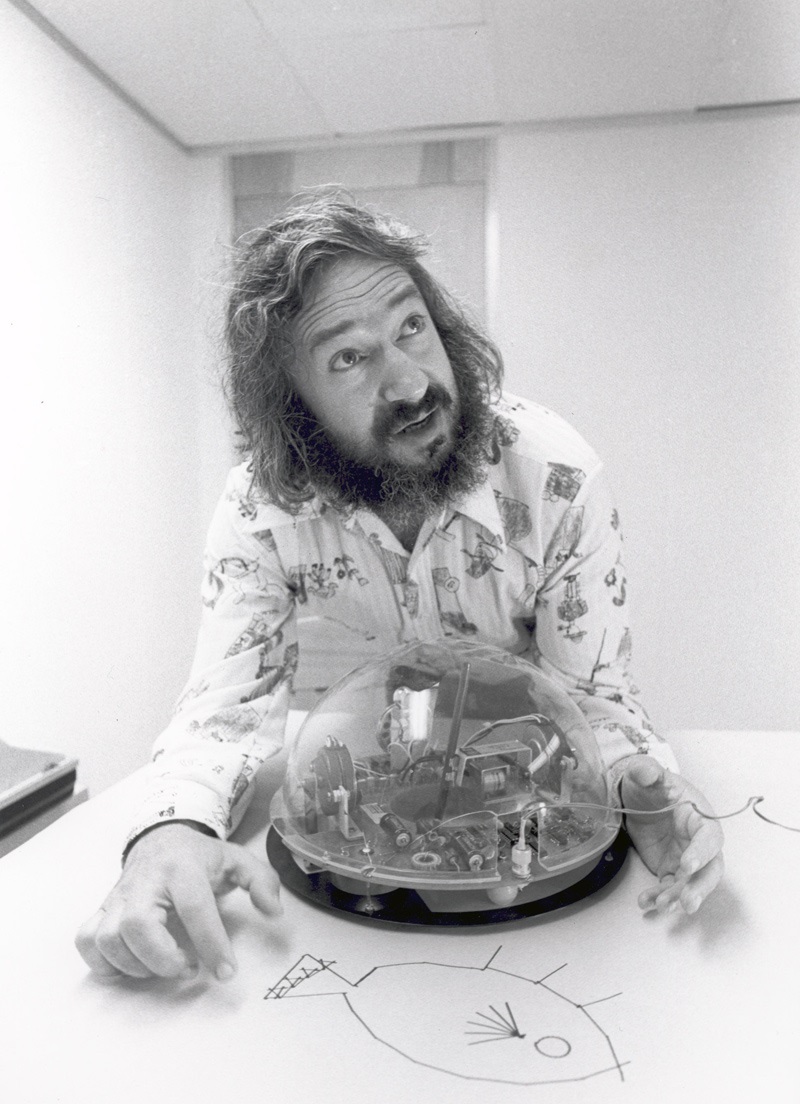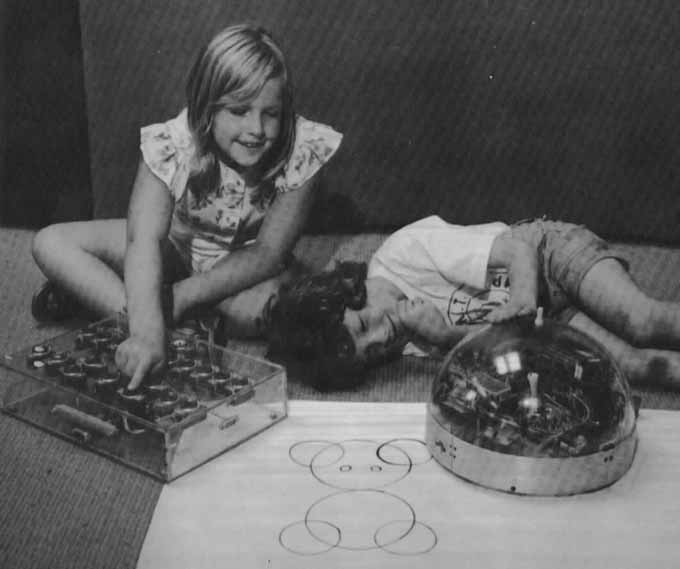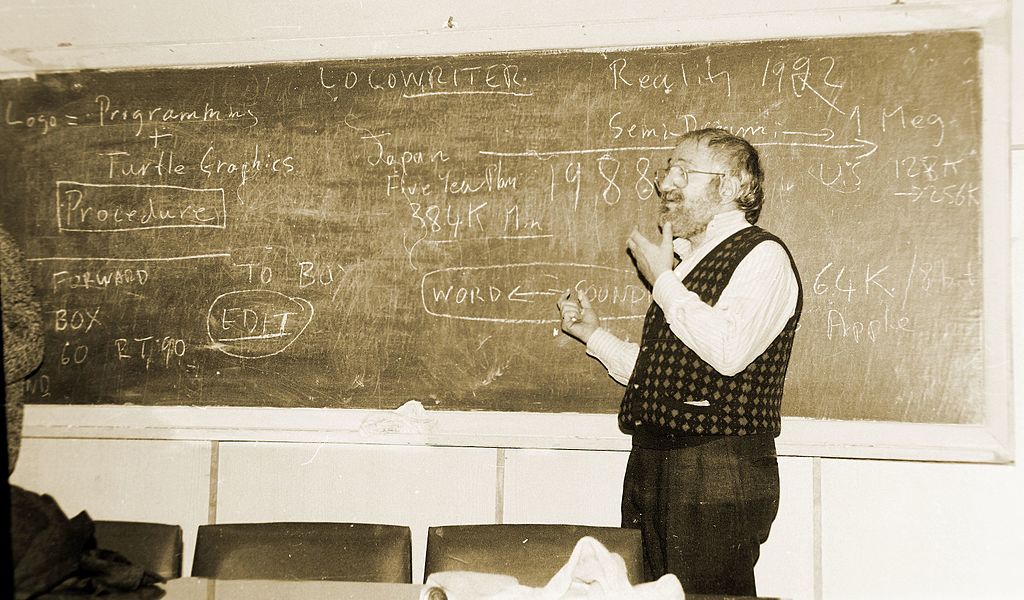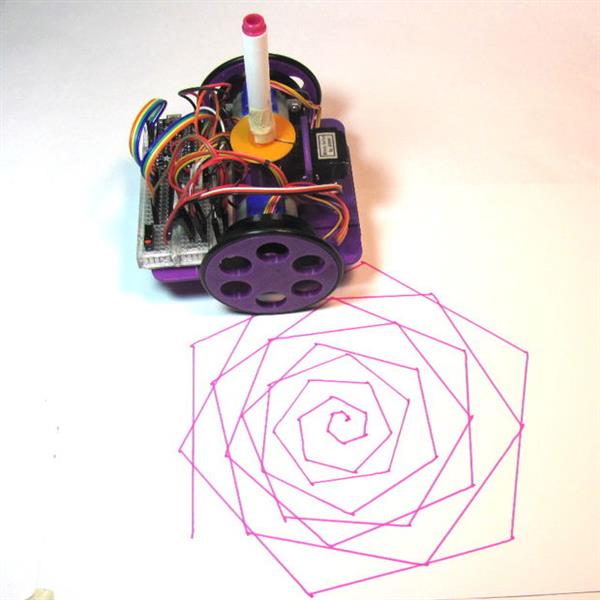
February 21, 2018
Turtle Graphics

Turtle Graphics in 1967

Created by Seymur Papert and Cynthia Solomon
MIT’s Artificial Intelligence Laboratory


… to teach children …

… how to think with computers

Key parts of computational thinking
- Decomposition
- breaking down a complex problem or system into smaller parts
- Pattern Recognition
- looking for similarities among and within problems
- Abstraction
- focusing on the important parts only, ignoring irrelevant detail
- Algorithms
- developing a step-by-step solution to the problem
You can make your own turtle

You can also have a turtle in R
You can install TurtleGraphics in R with this command
install.packages("TurtleGraphics")
Then you load into the session using
library(TurtleGraphics)
Now you start a new “terrarium” with
turtle_init()
Turtle lives in a terrarium
Set Up a New, Shiny Terrarium
turtle_init(width = 100, height = 100, mode = c("error", "clip", "cycle"))
- width
- numeric; plot width.
- height
- numeric; plot height.
- mode
- character string; one of “error”, “clip”, or “cycle”.
We will explore these options later
The turtle can move
- Move the Turtle Forward or Backward
turtle_move(10)move (10) steps- Turn (Rotate) the Turtle
turtle_right(15)turn cw (15) degreesturtle_left(15)turn ccw (15) degrees- Set the Turtle’s Position and Direction
turtle_setangle(90)point in direction (90 v)turtle_goto(0,0)go to x:(0) y:(0)
She can draw and hide
- Pen commands
turtle_up()pen upturtle_down()pen down- Display Options
turtle_col(0)set pen color to (0)turtle_lwd(1)set pen size to (1)turtle_lty(1)Change line type- Show or Hide the Turtle
turtle_hide()hideturtle_show()show
Where is the Turtle?
- Get the Turtle’s Current Position and Direction
turtle_getangle()(direction)turtle_getpos()(x position)(y position)
“Turbo” Mode
Evaluate a Larger Portion of Turtle Drawing Code
turtle_do({code here})
Let’s redo the Quiz on R
By default the terrarium size is 100,100
turtle_init()
In R, the turtle is not at (0,0)
turtle_getangle()
angle
0
turtle_getpos()
x y 50 50
So we have to adapt our code (how?)
Terrarium has borders
turtle_move(80)
Error in .turtle_draw_error(distance, curX, curY, curAng, curGp, curDraw, : The Turtle escaped from the terrarium. :-(
We can relax the border control
turtle_init(mode = "clip")
Here we work on Rstudio
Please write in paper what we do on Rstudio
What happens when the turtle gets out?
Since the turtle is at (50,50),
How do we change our code?
Decomposition
Separating a complex problem into smaller, more manageable parts
Here we separate a complex figure into many smaller parts
Homework: Draw a stick man using R Turtle Graphics
Pattern recognition
Is this problem similar to another?
Are there parts of this problem that are similar to each other?
Please answer this question
Computational Thinking
Source: https://www.bbc.co.uk/education/guides/zp92mp3/revision
What is computational thinking?
from BBC website
Computers can be used to help us solve problems. However, before a problem can be tackled, the problem itself and the ways in which it could be solved need to be understood.
Computational thinking allows us to do this.
Computational thinking allows us to take a complex problem, understand what the problem is and develop possible solutions. We can then present these solutions in a way that a computer, a human, or both, can understand.
The four key techniques of computational thinking
- decomposition
- breaking down a complex problem or system into smaller, more manageable parts
- pattern recognition
- looking for similarities among and within problems
- abstraction
- focusing on the important information only, ignoring irrelevant detail
- algorithms
- developing a step-by-step solution to the problem, or the rules to follow to solve the problem
Each cornerstone is as important as the others
They are like legs on a table
- if one leg is missing, the table will probably collapse
Correctly applying all four techniques will help when programming a computer.
Computational thinking in practice
A complex problem is one that, at first glance, we don’t know how to solve easily.
Computational thinking involves taking that complex problem and breaking it down into a series of small, more manageable problems (decomposition). Each of these smaller problems can then be looked at individually, considering how similar problems have been solved previously (pattern recognition) and focusing only on the important details, while ignoring irrelevant information (abstraction). Next, simple steps or rules to solve each of the smaller problems can be designed (algorithms).
Finally, these simple steps or rules are used to program a computer to help solve the complex problem in the best way.
